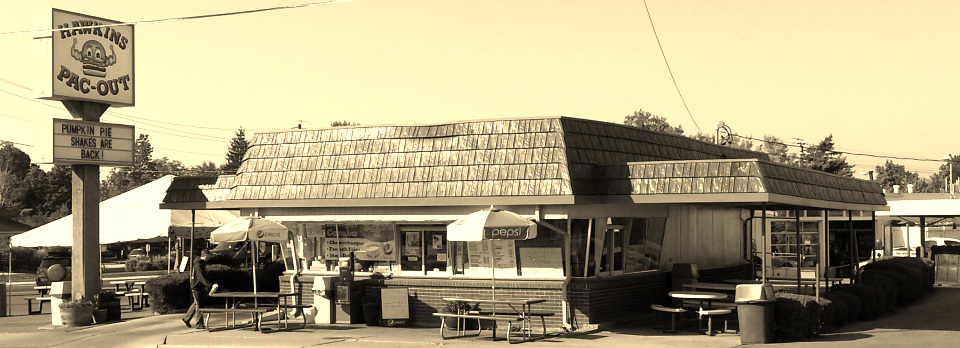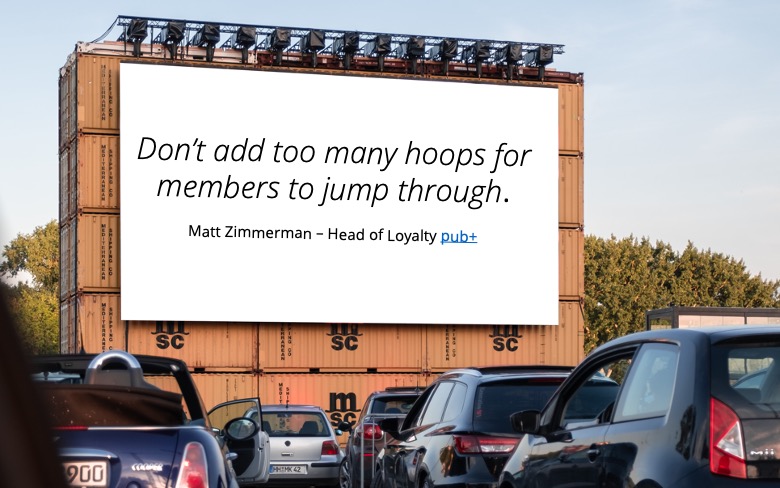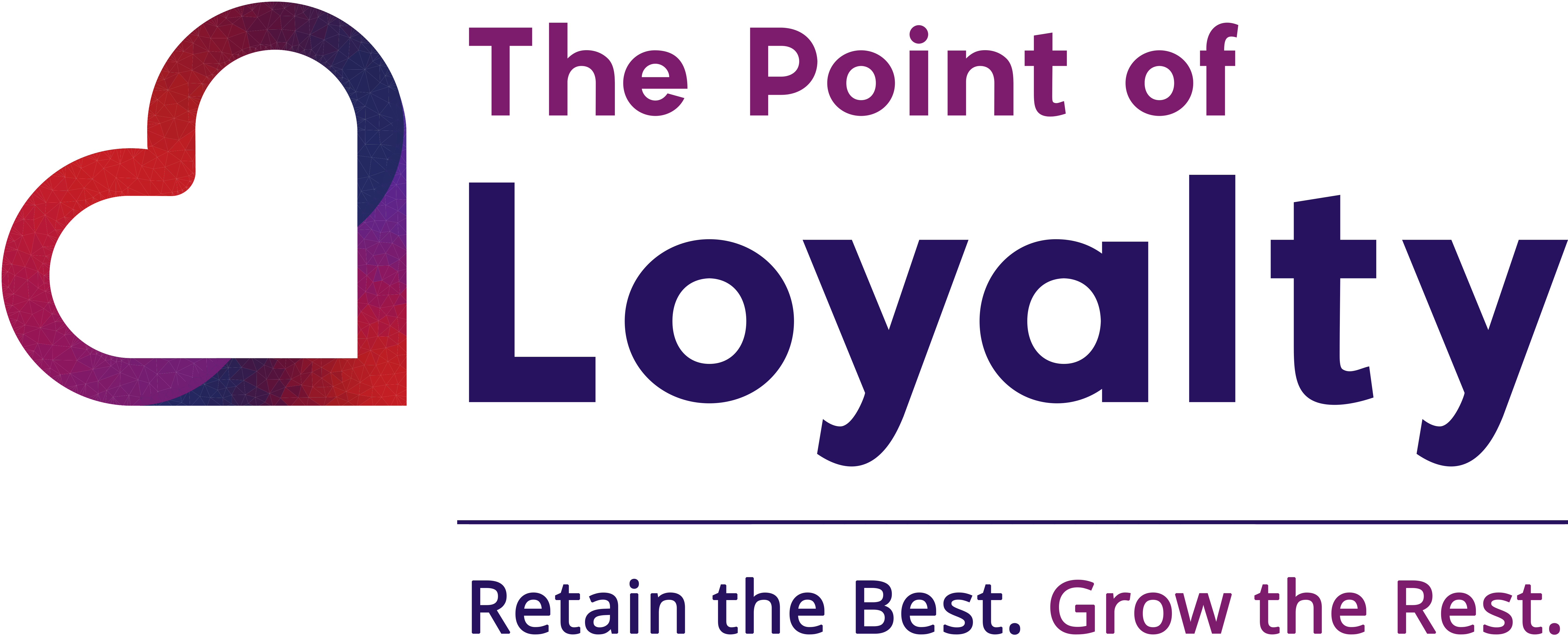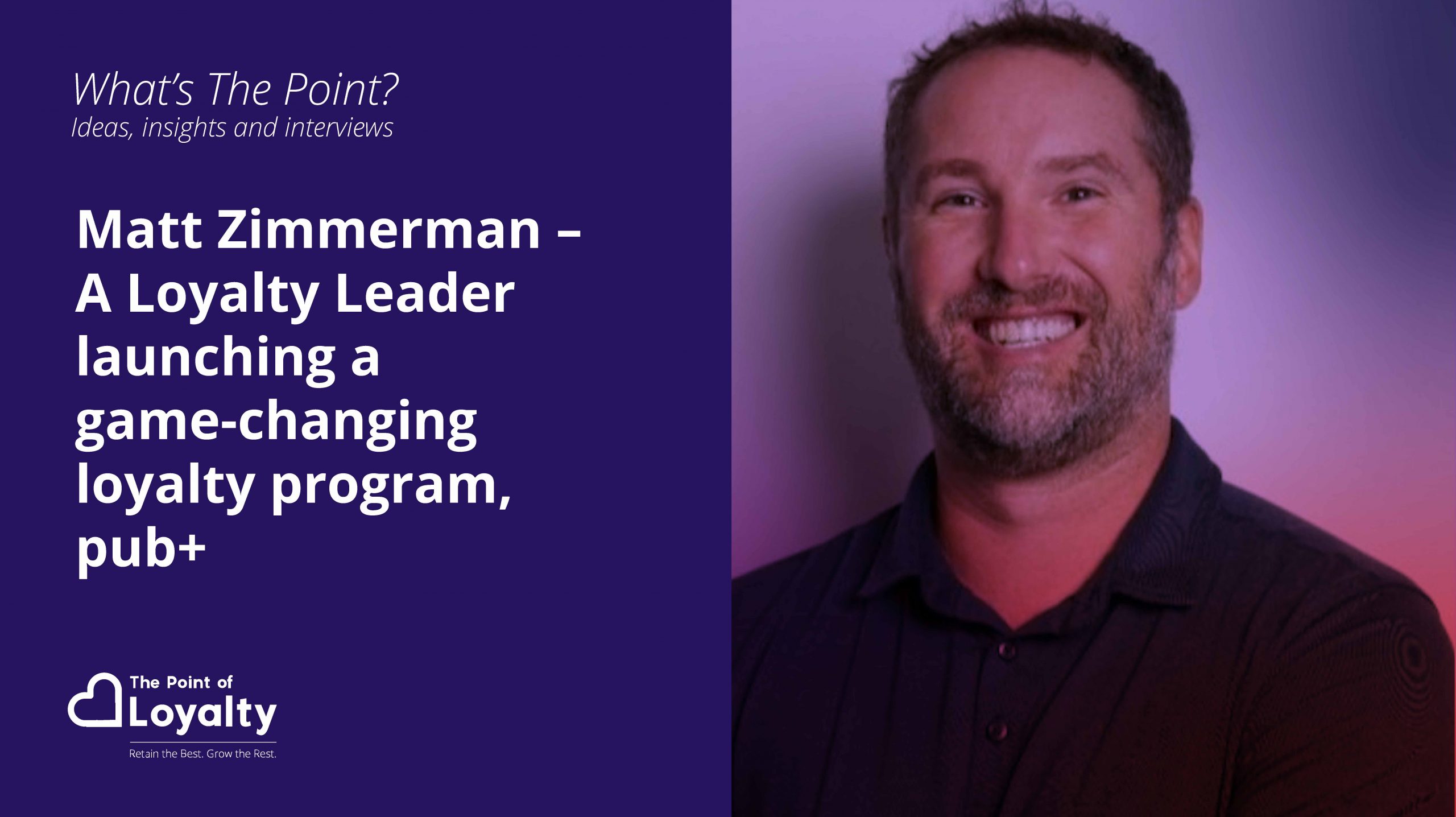An interview by Adam Posner with Loyalty Leader – Matt Zimmerman, Head of Loyalty pub+
This is the 30th interview in the series on Loyalty Leaders that I have had the pleasure and privilege of doing.
Every time I do these Loyalty Leader interviews, I get blown away!
The leaders I chat to are living with loyalty programs all day, every day, sharing their learnings, wisdom and passion.
And this interview is another one of those special Moments of Magic (MoMs) that surprised, delighted and added Joyalty* (plus more learnings) to my loyalty life and I hope it does to yours as well.
Matt Zimmerman is a loyalty leader who has grown up in hospitality (literally).
He has an extensive career in loyalty that spans restaurants, grocery (Albertsons), gaming (Caesars Casinos’ in Las Vegas), pharmacy and food delivery (Menulog).
He is now Head of Loyalty of a newly launched loyalty program (June 2024) pub+, a game changing loyalty program (so he says) for 350 pubs across Australia in the ALH Group.
Besides his extensive experience, he is intelligent, well-read, articulate and certainly has some fascinating points of view on loyalty programs and why the new program pub+ is different (read the section on measures of success).
Enjoy!
1. So, who is Matt (outside of work) + a little on your work biography
I was born in Washington in the US and grew up in Idaho, which is famous for potatoes!
From early on, probably when I was in single digits, I was working in hospitality, in my parents’ restaurants.
My dad was district manager for Black Angus, which was a really nice steak house on the West Coast. And then when we had our own restaurants, they were pubs and burger joints.
My brother now owns one – the Hawkins Pack Out in Boise Idaho…it’s kind of an institution.

(Fun fact – Pack Out is an American term for take-out)
I went through college bartending, working on cruise boats up in north Idaho around the lakes. I was bartending before I was of legal drinking age. I went on to open and manage Krispy Kreme stores around Idaho, Utah and Montana.
It was from there I had my first foray into loyalty marketing with a grocery retailer Albertsons – around 2005. We had a ‘preferred customer card’ with special promo pricing. My job was to be an analyst working with category managers to understand performance and impact these promotions had on the business.
Here I learned about supplier funding and how to dial up at speed promotions in the retail industry.
From there I landed an opportunity to work for Caesars Casinos in Las Vegas. That was the steepest learning curve for me. The people I was surrounded by were all super smart MBA’s, Harvard professors and MIT graduates. The CTO was literally a rocket scientist.
I owe a lot of my success to that time as their knowledge and experience on gaming loyalty programs was incredible and they helped me understand how programs can be run so efficiently and successfully.
Following that I had some time in consulting on the technology side of loyalty getting into the detail of functional specs, use cases and requirements documentation.
In 2012 I moved to Australia where I landed a role with loyalty technology provider.
Comment: At this stage of the interview, Matt reveals some cultural shocks he experienced on arriving in Australia and the stories he shared were laugh-out-loud…including his first day at work where he got lost getting to work and landed in a pub and the whole office then joined him there…sounds like a genuine Aussie induction!
In Australia, I worked for Hotels.com and then for five years at Menulog where I became head of loyalty and CRM. It was a fast-paced work environment especially during Covid when home delivery went crazy.
From there I went to endeavourX (Endeavour Group) and moved into a new role at ALH as head of loyalty for pub+
2.Tell us about the pub+ program. Any stats you can share?
It's the greatest program ever! That's what I can tell you.
pub+ will soon to be available across 350 pubs in Australia. (At the time of writing this article, it had only just been released in NSW during the week of 3 June 2024).
It rewards members when they're in the pub spending and in the future staying at Nightcap hotels and accommodation around Australia.
The program has been designed to drive engagement outside and inside the pub, through digital integrations within the pub to gamification within the app. It is an engagement and utility-based experience - members can use the app to book a table, for ordering at the table and paying to play pool - payment card linked in the future. Members will gain access to deals, rewards and benefits.
They earn points for food and beverage. Once a member earns 200 points, a guaranteed unlock moment is presented. The member then has a choice from 5-coin types: Beer, Wine, Spirits, Food & Non-Alcohol.
They select one of the 5 coins to load to their account and the value of the 5 coins will change each time they unlock. That is the gamification component. It’s also the surprise and delight moment.
It gives us more flexibility with the type of deals & coins and provides members with moments of delight each time they reach their points threshold, plus choice!
So, a member needs to download the app, create their account in just a few steps, and they will gain access to deals, rewards and benefits.
We have only been live in NSW for 10 days, but we have already achieved our 90-day scan target rate on food and beverage and the most popular coin flipped for an offer is the beer coin of choice!
The adoption from customers has been higher than expected and members are enjoying the benefits of the unlocked moments. It’s a real game-changer both in execution and as a proposition.
3. What is the most unique element of the program?
The brief I was given when I joined was to remove the fixed exchange rate that loyalty programs are stuck with and have gamification as a pillar.
What I mean is, a traditional program, as an example, might offer a thousand points, for $10 off. That is great for the first year, but as you go into the second year and the third year, you're stuck with that promise, and you are going to have to continue to up the reinvestment or you're going to have to dilute the exchange which becomes a member pain point.
What we've done is designed a program that guarantees individuals an unlocking moment (a guaranteed surprise benefit) and we control the value of each one of those coins as per the pub+ proposition.
We aren't locked into giving members $5 every time, or $6 every time. We can give them the choice of different values for a product of their choice.
Additionally, we have the flexibility to change the type and value of the unlocking moments.
So, if we want to tell a member that they’ve also unlocked a double points multiplier for that day, that's part of the unlocking moment. If we want to offer ten entries into an Hawaii Vacation, we can introduce that as part of the unlocking moment as a bonus.
We have enabled ourselves to truly leverage what gamification is – games of chance, but with a guaranteed benefit, with choice. It's a continuous reward experience and not just a do this, get that!
Comment: This program as described is based on removing fixed and inflexible program mechanics of ‘you get what you get and don’t get upset’. This program delivers perfectly into my Joyalty* Program principles of ‘planned spontaneity’. Expediting ongoing moments of magic, planned for, budgeted for, with a guaranteed benefit and with choice!
And that's one of the key pillars, in that loyalty points don't have to be the backbone of your program. You can provide savings instantly within the pub as part of the program, and you can have this be the cherry on top, right? How do people want to be rewarded and recognized?
It doesn't have to be a boring fixed exchange. It can be something exciting. And I think that's what we've done. Plus, we have a lot of other tricks up our sleeves!
Comment: The insight here is Matt’s motivation to move loyalty programs from the same old, staid, boring programs into a variable program of joy and delight….making Joyalty* Moments of Magic (MoMs) a reality!
In summary, the unique elements of the program are based on separating F&B from gaming loyalty to enable non-gaming guests to enjoy the benefits of pub+ and not be required to sign up for gaming.
As mentioned, gamification has been added to the program to enable members to select their coin. We plan to introduce themed, event and other gamification offerings over time. We will be introducing skill-based games into the program also which enables us to reward members for behaviour outside the pub.
By removing the fixed rate exchange for rewards, pub+ can personalise the unlock content and values. The coins can expand from F&B to entries into competitions or even new coin types that complement other parts of the ALH offering
4. If you had to choose the most important measures of success for your program, what would they be?
Externally, for members, we focus on the second and the third trips in x number of days. In our case, it's 90 days.
Internally, for our team, our measure of success is that our test and learn philosophy is adopted into our culture, where everything we do needs to be quantified, measured, delivered then refined.
How does that work?
We set up the structure for our team to provide their testing hypothesis, their problem statements. They then set up a test – execute – measure – learn - plan. And by doing this, when the team adopts this approach, we have a wider team buying into the proposition and understanding the value of it and improving it.
The success of this test and learn approach means the team understands how they can make the program work better for the members and the business, instead of the program just being a channel that enables them to do what they always do.
The adoption of a test and learn focus as a measure of success will be how many tests each area of the business wants to run, how they want to structure it, and how we will measure and report on it.
As an example in our first 90 days, we plan to have 5 or 6 major test and learn initiatives. We will kick off and there will be targeted campaigns, and that's where we'll start seeing the acceleration of testing.
Comment: To-date, this is the first time a Loyalty Leader I have interviewed, highlighted a key measure of success being the delivery of a test and learn culture. I admire this!
5. What were some of the challenges you faced in getting the program to market and how did you overcome these?
There's a laundry list. Build a new team. Nail the customer value proposition. Create a new brand. Integrate it into third parties. Create a new product - an app. Do total technology integrations. Be very close to the privacy, legal and regulatory requirements and then make sure this can be executed.
These were the challenges that we faced and had to overcome.
And the way we did that was by creating strong working groups across the business and all departments to ensure alignment.
We were always aligned back up to the business case that was approved.
It was also making sure everyone understood what each one of the working group's responsibilities were, clearly articulating those and then having a strong project manager to lead and guide all teams as a single unit.
Although we had a few ambitious start dates, we kept moving forward and deconstructed success, starting with a single state and then moving to national.
Although they were hard in some cases, that's how we overcame those challenges.
6. If you could start again with a blank strategy canvas, what would you do differently?
I wouldn't have designed it any differently.
I do think however, from two years ago when we started the design to when we delivered it, if I could change anything, I would say bring other parts of the business in earlier and establish more realistic timelines.
Our timeline shifted a few times due to the complexity of trying to build something from scratch.
Also setting the foundations of positioning pub+ as not just an app, it's not just a loyalty program.
It's a digital platform that enables content to be managed, members to be identified, members to be rewarded, bookings to be made with an ordering utility, accommodation bookings and so on.
Therefore, the opportunity becomes much larger around what Pub+ can become. It can touch all components of the experience.
Once the business started realising that we're not just building an app, we're building something that is going to fully integrate into the pub experience, that's how we started breaking through.
7. What advice would you give to brands thinking about a loyalty program?
I would say if you're a brand that doesn't have a loyalty program today, clearly define what you're trying to achieve.
And are you thinking that a loyalty program is going to solve your business problems? If the answer is yes, I would say loyalty programs are not designed to solve business problems.
They actually end up exposing gaps within the business. Be careful. Don't just paste a program over a business problem.
Loyalty programs require significant changes in ways of thinking, working and operating.
Make sure that the business truly understands what they're getting into. And that change is part of your implementation and design. Otherwise, you're going to be met with roadblocks everywhere.
Finally, if you're the loyalty department and you're the loyalty manager, make sure you're seen as an enabler of other departments to achieve and exceed their goals. Do not impose your will on their areas of expertise.
8. What’s the biggest frustration you have with loyalty programs?
A lot of time, energy and resources are spent on acquisition of new members.
But when it comes time to reinvest into those new members, the pockets dry up. They usually dry up because programs haven't been structured in a way to quantify the value of a member.
Once you can quantify the value of a member, those purse strings become looser, and you'll gain access to investment.
So that's probably one of my biggest frustrations, watching people not being able to reinvest into their members, because they can't quantify the value of that member.
As a member of a program, my frustration is the collection of my personal information to enable me to get a discount or a benefit when I have not been told why they want all my information and once they get it, they don't even use it.
9. What do you think is creeping up on programs that could disrupt them for better or worse?
1. Data collection and the justification of collecting personal information involving demographics, behavioural and transactional data is going to disrupt the way in which we are able to market to individuals.
2. The credit card providers are becoming more refined in their offerings and options for a small business to leverage an off-the-shelf loyalty program solution that manages the technology, communications and privacy as an all-in-one proposition.
For smaller businesses, the risk of holding and retaining personal information or trying to build a loyalty program where you can communicate through multi-channels is daunting, and the credit card providers are becoming more adept in providing a proposition for this.
10. What’s the most underestimated force behind a program’s performance?
If you are a bricks and mortar business, it’s the frontline staff.
A lot of time and effort is spent designing the best program on the planet in the office. But if you don't have that front line team educated and incentivised to drive the program, you're not going to gain any traction.
Another one is perceived value. How the reward is positioned can change the perceived value. When McDonald's launched, they offered you a free item to join their loyalty program.
They could have given you some dollar off as a value, but the perceived value of the item was greater than just a straight discount.
11. What are three important skills a loyalty program marketer needs?
- Patience
- Patience
- Patience
Once we get past patience, which I struggle with, even still to this day, you need strong financial acumen. Loyalty programs are designed on the financial outcome and the return on investment. They are not about putting some bells and whistles on things and making it fun.
Then there is the skill of compartmentalisation. You need to be able to understand problems and deconstruct them. And then be able to attack them in a way in which you can provide an action plan and deliver results.
12. If we are chatting again in (say) 2 years’ time, what do you predict would be the hot topic related to loyalty programs?
Loyalty programs will put a greater value on your interactions and not just your transactions.
Especially on social channels where many of the younger generations are immersed, the value of members will be based on your engagement with a brand, how you promote that brand and what you can do spread their value. If you have time, read a book called “Who Owns the Future”.
What you do online will become of more value to the business and the potential to invest in you if you are part of a loyalty program.
13. Leave us with a lasting loyalty thought

Summary
There are many important reminders and deeper insights shared by Matt in this Loyalty Leader interview. My favourite five are:
1. Solving problems: Loyalty programs are not designed to solve business problems. They actually end up exposing gaps within the business. Be careful. Don't just paste a program over a business problem.
2. Loyalty programs require an all-of-business mindset change: Loyalty programs require significant changes in ways of thinking, working and operating. Make sure that the business truly understands what they're getting into. And that change is part of your implementation and design. Otherwise, you're going to be met with roadblocks everywhere.
3. Structure a program from fixed to flexible: Consider a program that removes the fixed exchange rate that loyalty programs are stuck with and have gamification as a pillar
4. If you want ongoing investment in a program, quantify the value of a member: A lot of time, energy and resources are spent on acquisition of new members. But when it comes time to reinvest into those new members, the pockets dry up. They usually dry up because programs haven't been structured in a way to quantify the value of a member. Once you can quantify the value of a member, those purse strings become looser, and you'll gain access to investment.
5. Skills a loyalty program marketer needs: Patience (lots of it) + financial acumen + problem solving with an action plan)
Thanks Matt!
Have a happy loyalty day
*Joyalty - Your customer’s feeling of maximum joy and delight from one or a series of Moments of Magic (MoMs) delivered by your brand.

